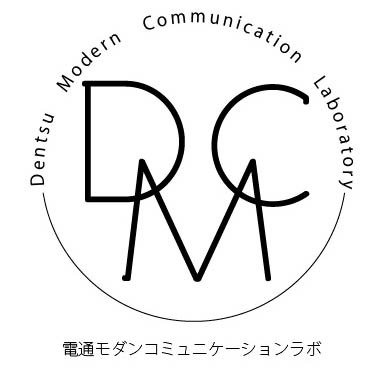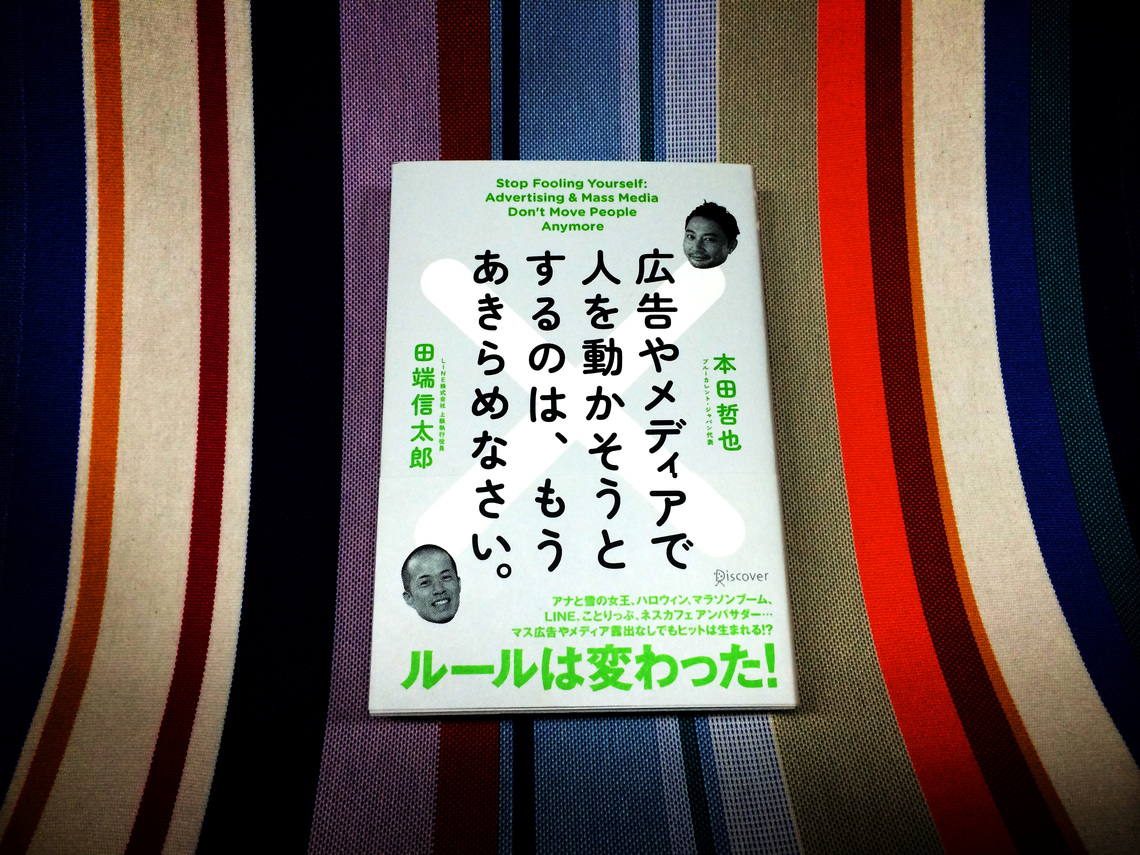Note: This website was automatically translated, so some terms or nuances may not be completely accurate.
Give Up on Trying to Move People with Advertising and Media.
This time, we will be featuring the co-author ed book"Give Up on Trying to Move People with Advertising and Media"byTetsuya Honda, a leading expert in strategic PR and Representative Director of Blue Current Japan, andShintaro Tabata, known as the "Media Guy," who has been involved with a wide variety of media and currently serves as Senior Executive Officer in charge of Corporate Business at LINE Corporation.
The title hooked me
For those involved in advertising, media, or marketing, this is an incredibly provocative title. I, too, was completely hooked and picked it up. No, no, that's too harsh, I thought indignantly as I read on. Ultimately, in the section titled "To more accurately rephrase this book's title...", it is rephrased as follows:
Give up trying to move (many) people (only) through advertising and media (as you have done until now).
Ah, if that's the case, I wouldn't be averse to agreeing. (Sounding arrogant)
I swallowed the urge to retort, "But even before, it was never that simple to get people to act just by using ads and media!" (I'm writing this, though). It's true, in today's world where media is diverse and information is overwhelming, that's definitely the case.
So then, going forward, how exactly should we move large numbers of people, rather than just idly relying on ads and media alone?
Reach them through cross-media, multi-faceted, multi-layered messaging?
Create a buzz on social media?
Ah! So we should just adopt the latest "XXXX marketing" trend!
No. In Mr. Tabata's "Foreword," he writes:
"The 'timeless and trendy' in marketing. I hope you'll read this book with a particular focus on the 'timeless,' and grasp the essence that lies beyond superficial techniques and trends."
It states that while "trends" in marketing aren't meaningless, there's a more important "essence" beyond them. So what exactly is this "essence of marketing" the book speaks of?
A realistic understanding of the current state of marketing and media: control is shifting to the audience, and not everything can be controlled in advance.
In Part 1, "Is 'The More People See It, the Better' Really True?" written by Mr. Tabata, there are two crucial points regarding the current state of marketing and media.
・In the age of information explosion, the "recipient" holds the initiative.
• Shift from monologue to dialogue. Abandon the mindset of trying to control everything in advance.
Time-shifted viewing of TV programs via HDD recorders and articles from newspapers and magazines reposted on the web have shifted the "editorial control" and "programming authority" previously held by information disseminators (i.e., advertising and media) to the audience. Technology evolves toward greater user convenience and usability, making this trend irreversible. As the once-powerful influence of advertising and media relatively weakens, getting your message heard requires not just one-way "speeches" (mass advertising, SEM, etc.), but increasingly relies on "conversations" between individuals (social diffusion, PR, SEO, content marketing, etc.). This shift is an inevitable progression.
Mr. Tabata's explanation comparing corporate marketing communications to "election campaigns" is highly visual and easy to grasp—be sure to check it out in the book.
But how do you move people?
In PART 3, "Never Give Up on 'Moving People'" written by Mr. Honda, he examines the "fundamentals" of moving people, identifying three key elements: mind, skill, and body.
"Mind" = People's feelings, emotions, and true thoughts (insights)
"Technique" = Media and content strategy and tactics
"Physical" = Sensory experience, experiential engagement
Among these, the element most enduringly relevant is "Heart." Honda states that the key to moving people lies in capturing the correct insight (true feelings) and discovering the "emotional boiling point" – the threshold at which people act. This is because, regardless of the era, fundamental human emotions, desires, and inner workings, while influenced by society and culture, do not change drastically.
This book cites examples of these mental elements, such as: "Vanity," "Peer Pressure," "Sense of Mission," "Solidarity," "Sympathy," "Complicity," "Festive Spirit," "Lewdness," "Faith," "Desire for Communication," and so on. Aren't these all things that you, and indeed all humans across time, possess? Reflecting on myself, whenever I take action, I recognize the influence of these mental elements. (Admittedly, they're often trivial things like "vanity," "jealousy," or "shame.")
And as a concrete procedure for "strategic planning to move people," "five steps" are introduced.
[Step 0] First, always clarify the "purpose"
[Step 1] Thoroughly identify "Target Insights"
[Step 2] Match the "Objective" with the "Insights"
[Step 3] Decide what to communicate to trigger the "Emotional Boiling Point"
[Step 4] Prepare content that creates the "Emotional Boiling Point" experience
[Step 5] Determine communication tactics "in order of least cost"
From the perspective of what is timeless in marketing, the crucial points lie between [Step 2] and [Step 3]. This is where the "core idea" in marketing communication is born. Also, [Step 0] is often surprisingly neglected. In this book, "clarifying the purpose" means defining it down to the level of 'specifically how many people and what specific actions you want them to take'. Isn't it often the case that we proceed with vague, wishful thinking like "reach as many targets as possible..." or "hopefully drive purchase actions..."? If the purpose remains unclear, subsequent steps—such as "Is this insight capable of achieving the purpose?" or "Is this communication plan sharp enough to strike that insight and create an emotional boiling point?"—also become vague.
Strategic planning to move people must be tailor-made to fit the purpose. In other words, you can't create something that fits unless you have a concrete grasp of the body size (= purpose).
From 1,000 to 1 billion people: Visualize concretely for each scale you want to move
Part 2 of their dialogue, "Why Do People 'Move'? – Thinking at Each Scale: From 1,000 to 1 Billion," is exceptionally unique. It presents case studies for each scale: 1,000 people, 10,000 people, 100,000 people, 1 million people, 10 million people, 100 million people, and 1 billion people.
While the numbers—whether volunteer participation, paid newsletter subscribers, total musical theater attendance, or religious followers—lack uniformity for direct comparison of pure scale, this approach successfully captures the broad overview of human movement. Classifying and examining "the scale of people mobilized" in this manner represents an unprecedented innovation. This is a concept worth keeping in mind when "clarifying objectives."
Finally
I feel the key points of this book (specifically, "What should we do to mobilize large numbers of people, moving beyond relying solely on advertising and media?") can be distilled into the following three points. I'll restate them here:
① Maintain a realistic understanding of the current state of marketing and media (the initiative lies with the audience, and prior control is impossible)
② Set marketing objectives concretely and clearly, specifying the scale of the audience you want to move and the specific actions you want them to take
③ Find the insight that "ignites the boiling point of the heart" to achieve the objective
The book's title, which hooked me completely, has another interpretive twist besides the supplementary note quoted at the beginning of this article. To discover what that is, I strongly encourage you to pick up the book and read it for yourself.

Was this article helpful?
